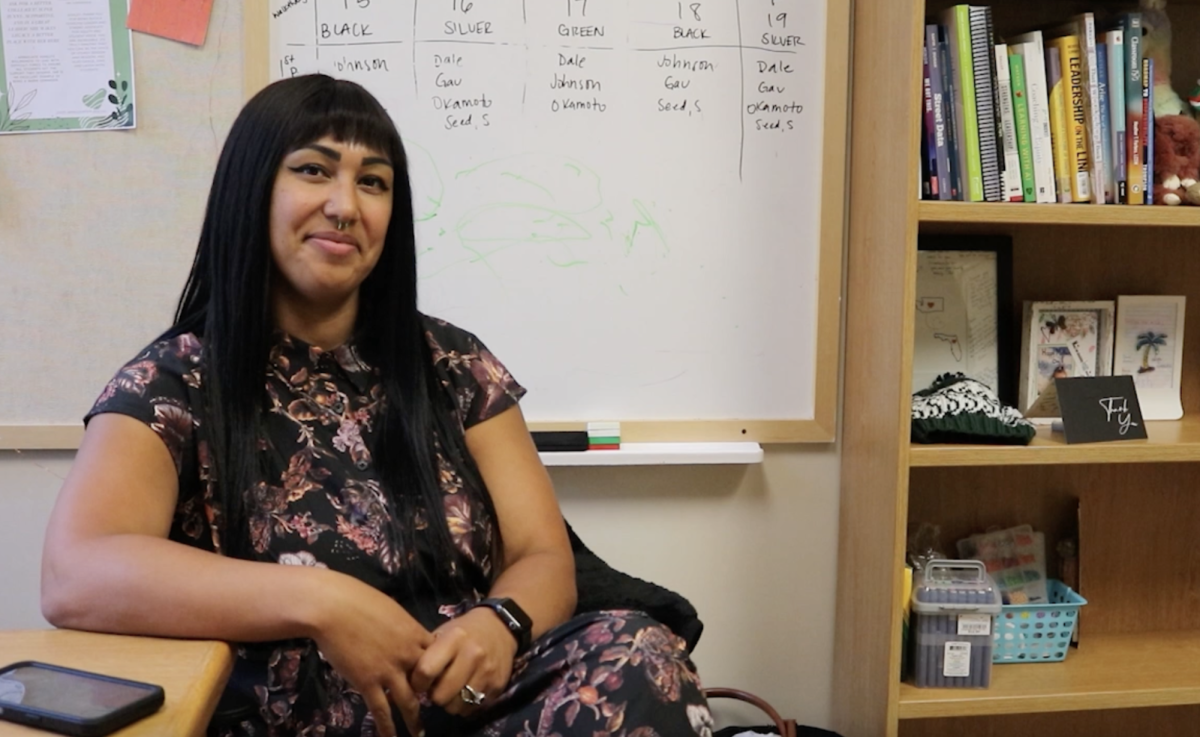Thursday, April 4, Summit held its third and final Red Cross Blood Drive this year to donate blood to adults, children and teens in need. The problem? Only 22 people donated, half of which signed up the day of.
“On average, [at] Bend High, I usually collect over 40… [units of blood]; Mountain View’s the same. Redmond and Ridgeview collect about 36,” said Jennifer Shaw, Donor Recruitment Manager for the local Red Cross. “Bend Tech, which is a really small school, they collected 26 their last time.”
Compared to other schools in Bend, both public and private, Summit was far beneath the typical donation rates. Shaw in part attributes this to a lack of preparedness.
“I had Cascade Middle School yesterday, and that one is eighth grade students recruiting their parents and teachers. They had a full schedule two weeks before spring break. It really does pay to work in advance,” said Shaw on Friday, the day after the Summit drive.
Student council representative, Emerson Williams, who is in charge of the Blood Drives believes the reason for Summit’s lack of preparation is different. The steps she and her committee of Stu-Co members take are thorough, including a long list of tasks such as getting announcements out on Canvas, putting tables at the front of the school to raise awareness, posting posters, handing out pamphlets and so much more. While these steps were taken for the first two blood drives, this one was much different and could’ve used a more proactive effort.
“We do a lot when it comes to advertising and getting the word out, and I’ll even ask people one on one, like who I’m close with or who’s donated in the past, and it’s usually a no,” said Williams. “I think also, a lot of students here are athletes, and I think a lot of students here don’t want to donate during their season so it’s like you’re gonna take away a third of the population during the blood drives because of their season.”
Many coaches, parents and more may try to convince you that giving blood will harm your sports performance—it’s not as true as they might think. Studies(1) prove that while O2 levels in blood along with maximum aerobic power decrease after a blood donation, they don’t have any impact on the time to fatigue, otherwise known as your endurance. Scientists reason that this means the anaerobic energy systems cover for the missing O2, allowing the individuals to maintain the same exercise performance they had before the donation.
In other words, while this study also proves it takes three weeks to fully recover the O2 lost, it won’t affect your ability to exercise or perform fully.
Alongside that, Cascade Middle, in which none of the students themselves are even able to donate blood, had a full schedule. Even if athletes are still concerned about blood donation interfering in their performance, or students are unable to donate due to medical conditions, bringing in adults to give blood is just as effective and beneficial. It shouldn’t matter if you can or can’t donate blood, you can invite parents and teachers to come in your place.
“Every two seconds, someone is needing blood products,” Shaw said. “You’ll see doctors are having to say, ‘Who’s gonna be lucky today, who’s going to get this blood?’ It really does come down to life and death.”

































Emerson Williams • May 2, 2024 at 5:45 pm
I just want to say a few things!
1 – I’ve talked with admin in the past and Summit Drives are not allowed to bring in adults outside of faculty, meaning parents, family friends, and relatives are entirely off of the table.
2 – I made it very clear to Jennifer Shaw that I was concerned about the outcome of this blood drive, which ended up following Spring Break. That being said, traveling internationally, being unavailable for the actual blood drive, and other common experiences that occur during spring break make a certain demographic of students ineligible to donate.
3 – Although studies show that endurance and performance “isn’t affected” by donating blood, everyone has different reactions, as well as coaches and family still may encourage students to not donate concerning sports seasons. On top of this the Red Cross has posted on their website to avoid strenuous activities saying, “Don’t do any heavy lifting or vigorous exercise for the rest of the day.”
4 – My committee on StuCo went around to every classroom with a teacher in it the week before the drive and handed out pamphlets, there were Canvas announcements available to every student and teacher, and there were numerous posts and announcements. Teachers all knew about this drive and had every opportunity to sign up, same with students.